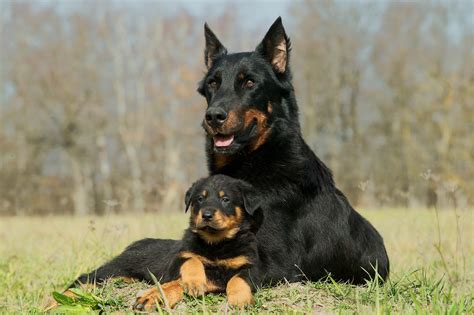Discover the benefits, training methods, and misconceptions about protection dogs. Find the right breed and maintain their health for your needs.
Why Protection Dogs are Essential
Protection dogs play a vital role in providing security and safety to individuals and families. One of the key reasons why protection dogs are essential is their ability to deter potential threats and intruders. With their strong and protective nature, these dogs can act as a first line of defense, giving their owners a sense of peace and security. Whether it’s at home or in a public setting, protection dogs provide a sense of security that cannot be matched by other security measures.
Additionally, protection dogs offer a level of companionship and loyalty that goes beyond traditional guard dogs. These dogs are trained to form a strong bond with their owners, making them not only protectors but also beloved members of the family. Their heightened sense of awareness and loyalty make them an essential part of the security plan for many individuals and families.
Furthermore, protection dogs are essential for those who may have specific security needs, such as individuals who live alone or those who require additional protection due to their profession. These dogs are highly trained and can be customized to meet the unique security needs of their owners, providing a tailored and effective security solution. Overall, the essential role of protection dogs in providing security, companionship, and peace of mind cannot be understated.
Characteristics of Top Protection Dog Breeds
When it comes to choosing a protection dog, it’s important to consider the characteristics of the breed. Top protection dog breeds are known for their loyalty, intelligence, and trainability. These breeds are also known for their strength, courage, and natural protective instincts. In addition, some top protection dog breeds have specific physical characteristics such as size, speed, and agility that make them well-suited for the role of a protection dog.
German Shepherds are one of the most popular and well-known protection dog breeds due to their intelligence, loyalty, and versatility. They are often used in police and military work, as well as personal protection. Another popular breed for protection work is the Rottweiler. This breed is known for its strength and confidence, making them excellent protection dogs. Belgian Malinois are also commonly used for protection work due to their high energy levels, intelligence, and agility. These are just a few examples of top protection dog breeds that possess the necessary characteristics for security and protection.
It’s important to remember that not all breeds are suitable for protection work, and it’s essential to carefully consider the specific characteristics of each breed before making a decision. Proper training and socialization are also crucial factors in the development of a well-rounded protection dog, regardless of the breed. By understanding the characteristics of top protection dog breeds, individuals can make informed decisions when selecting a dog for security and protection purposes.
Training Methods for Protection Dogs
Training methods for protection dogs vary depending on the breed, temperament, and purpose of the dog. It is important to choose the right approach to training in order to maximize the effectiveness of the dog as a security measure. Positive reinforcement is one of the most common and effective training methods for protection dogs. This involves rewarding the dog for exhibiting the desired behavior, such as alerting to intruders or following commands. This method focuses on building a strong bond between the dog and its owner, making the dog more responsive to training.
Another important training method for protection dogs is obedience training. This involves teaching the dog to respond to commands such as sit, stay, and come. In addition to teaching basic commands, obedience training also focuses on teaching the dog to have good manners and to behave appropriately in different situations. This is essential for protection dogs as they need to be well-behaved and under control at all times.
Socialization is also a crucial part of training protection dogs. This involves exposing the dog to different people, animals, and environments in order to build its confidence and reduce the likelihood of aggression towards strangers. Proper socialization can help the dog distinguish between friend and foe, and can prevent it from reacting aggressively towards non-threatening individuals. When choosing a training method for protection dogs, it is important to consider the specific needs and temperament of the individual dog, as well as the desired level of security it is expected to provide.
Common Misconceptions about Protection Dogs
Common Misconceptions about Protection Dogs
One common misconception about protection dogs is that they are all aggressive and dangerous. In reality, properly trained protection dogs are obedient and well-behaved, only showing aggression when their handler is threatened. This misconception often stems from misunderstandings about the purpose and training of protection dogs.
Another misconception is that protection dogs are unfriendly towards strangers. While protection dogs are naturally wary of strangers due to their protective instincts, they can be trained to differentiate between potential threats and non-threatening individuals. With proper socialization and training, protection dogs can be welcoming and friendly towards guests and visitors.
Some people also believe that protection dogs are only suitable for families with large properties or specific security needs. In reality, protection dogs can be a beneficial addition to any household, regardless of the size of the property. They can provide a sense of security and peace of mind for their owners, regardless of their living situation.
Benefits of Having a Protection Dog
Having a protection dog can bring numerous benefits to your life. These intelligent and highly-trained animals provide a sense of security and protection unlike any other. With their strong sense of loyalty and natural protective instincts, they can serve as a valuable asset in keeping you and your property safe from potential threats.
One of the greatest advantages of having a protection dog is the peace of mind they offer. Whether you live alone or with a family, having a well-trained dog by your side can help deter potential intruders and provide a sense of safety and security. In addition to their protective abilities, protection dogs also offer companionship and can be a source of comfort and support in times of need.
Moreover, protection dogs are incredibly versatile and can be trained to assist with a variety of tasks, such as search and rescue, tracking, and even therapy work. Their intelligence, loyalty, and unwavering devotion make them a valuable addition to any home or business, providing an extra layer of security and peace of mind.
Choosing the Right Breed for Your Needs
When it comes to choosing a protection dog breed that best suits your needs, it’s important to consider various factors such as the size, energy level, temperament, and trainability of the dog. A German Shepherd is known for its intelligence, loyalty, and versatility, making it a popular choice for protection work. On the other hand, a Rottweiler is known for its strength, confidence, and protective nature, making it a great option for guarding and protection tasks. Doberman Pinschers are another breed often chosen for protection work due to their alertness, loyalty, and adaptability.
It’s also crucial to assess your living situation and lifestyle when selecting a protection dog breed. For instance, if you live in a small apartment, a large and high-energy breed like a Belgian Malinois may not be the best fit. Similarly, if you have young children at home, you’ll need a breed that is gentle and tolerant, such as a Bullmastiff or a Boxer.
Ultimately, the decision of choosing the right breed for your needs should be based on thorough research, consultation with reputable breeders or trainers, and consideration of your specific security requirements. Keep in mind that owning a protection dog is a long-term commitment, so it’s essential to choose a breed that aligns with your lifestyle, capabilities, and expectations.
Maintaining the Health and Well-being of Protection Dogs
Keeping your protection dog healthy and happy is crucial for their overall well-being and effectiveness in their role. One of the most important aspects of maintaining the health of your protection dog is ensuring they receive regular veterinary check-ups and vaccinations. These regular check-ups will help to prevent and detect any potential health issues before they become serious.
Another key factor in maintaining the health of your protection dog is providing them with a balanced diet and regular exercise. A well-balanced diet that is appropriate for their breed and energy level will help to keep them at a healthy weight and prevent obesity-related health issues. Regular exercise is also important for maintaining their physical and mental well-being, as it helps to burn off excess energy and prevent boredom.
Additionally, grooming and hygiene are essential for the health and well-being of your protection dog. Regular grooming, including brushing their coat, trimming their nails, and cleaning their ears, can help to prevent skin infections, matting, and other health issues. Keeping their living environment clean and providing them with a comfortable and safe space to rest is also crucial for their overall well-being.
Frequently Asked Questions
What are the top protection dog breeds for security?
Some of the top protection dog breeds for security include German Shepherds, Rottweilers, Doberman Pinschers, Bullmastiffs, and Belgian Malinois.
Are these breeds suitable for family pets as well?
Yes, many of these protection dog breeds can also make great family pets with proper training and socialization.
What are the key characteristics to look for in a protection dog breed?
Key characteristics to look for in a protection dog breed include intelligence, loyalty, agility, strength, and a protective instinct.
How can one train a protection dog for security purposes?
Training a protection dog for security purposes involves working with professional trainers, socializing the dog, and teaching it obedience and protection commands.
What are some important factors to consider before getting a protection dog?
Important factors to consider before getting a protection dog include the dog’s size and energy level, your lifestyle and living situation, and the time and resources needed for training and care.
Can any dog be trained for protection purposes?
While some dogs may have the potential for protection training, it is important to choose a breed with the right instincts and characteristics for security work.
Are there specific laws or regulations for owning a protection dog?
Laws and regulations for owning a protection dog can vary by location, so it is important to research and understand the legal requirements in your area.





